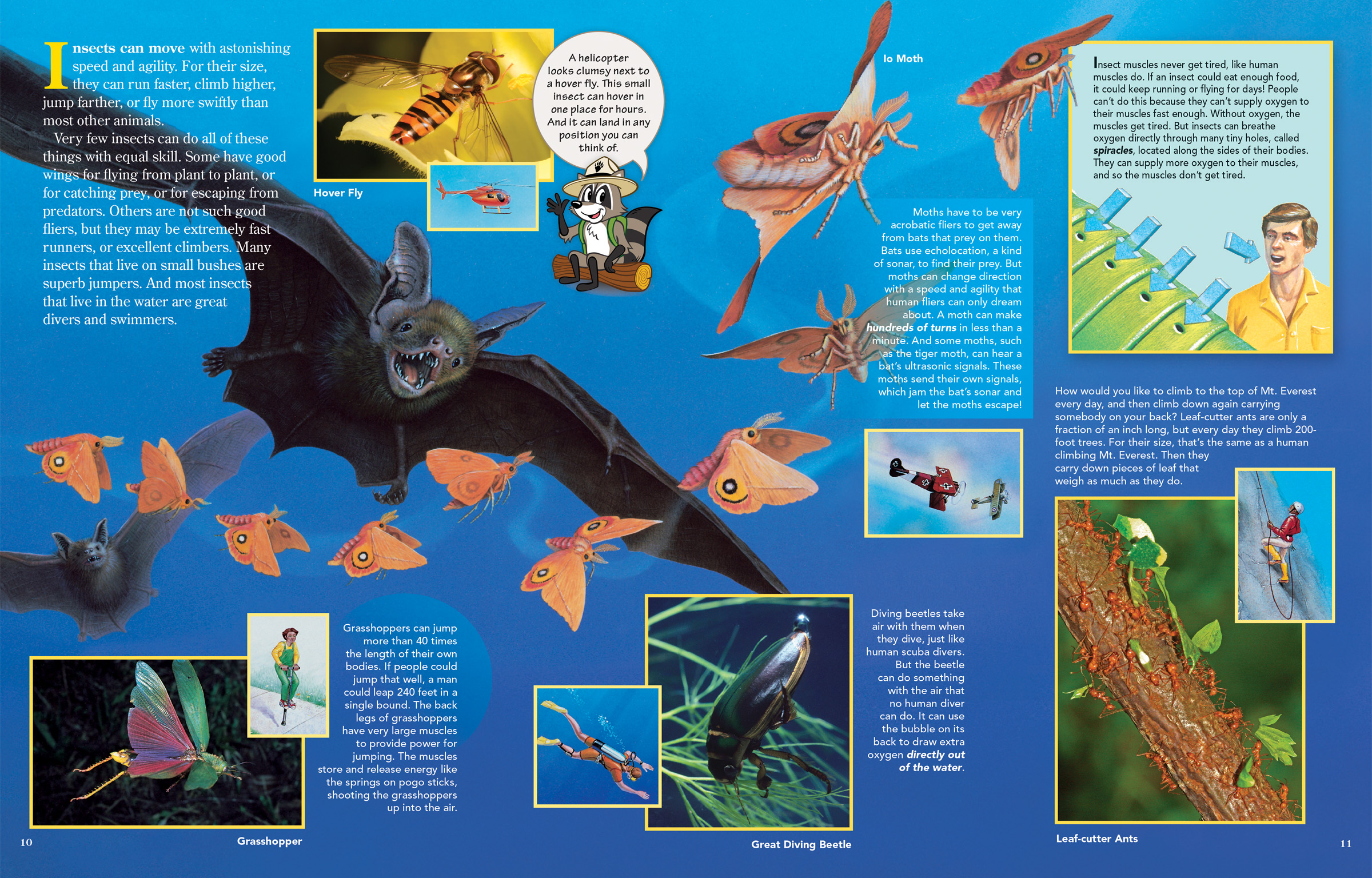
Insects Can Move With Astonishing Speed
ByInsects can move with astonishing speed and agility. For their size, they can run faster, climb higher, jump farther, or fly more swiftly than most other animals.
Very few insects can do all of these things with equal skill. Some have good wings for flying from plant to plant, or for catching prey, or for escaping from predators. Others are not such good fliers, but they may be extremely fast runners, or excellent climbers. Many insects that live on small bushes are superb jumpers. And most insects that live in the water are great divers and swimmers.
A helicopter looks clumsy next to a hover fly. This small insect can hover in one place for hours. And it can land in any position you can think of.
Grasshoppers can jump more than 40 times the length of their own bodies. If people could jump that well, a man could leap 240 feet in a single bound. The back legs of grasshoppers have very large muscles to provide power for jumping. The muscles store and release energy like the springs on pogo sticks, shooting the grasshoppers up into the air.
Moths have to be very acrobatic fliers to get away from bats that prey on them. Bats use echolocation, a kind of sonar, to find their prey. But moths can change direction with a speed and agility that human fliers can only dream about. A moth can make hundreds of turns in less than a minute. And some moths, such as the tiger moth, can hear a bat’s ultrasonic signals. These moths send their own signals, which jam the bat’s sonar and let the moths escape!
Insect muscles never get tired, like human muscles do. If an insect could eat enough food, it could keep running or flying for days! People can’t do this because they can’t supply oxygen to their muscles fast enough. Without oxygen, the muscles get tired. But insects can breathe oxygen directly through many tiny holes, called spiracles, located along the sides of their bodies. They can supply more oxygen to their muscles, and so the muscles don’t get tired.
How would you like to climb to the top of Mt. Everest every day, and then climb down again carrying somebody on your back? Leaf-cutter ants are only a fraction of an inch long, but every day they climb 200-foot trees. For their size, that’s the same as a human climbing Mt. Everest. Then they carry down pieces of leaf that weigh as much as they do.
Diving beetles take air with them when they dive, just like human scuba divers. But the beetle can do something with the air that no human diver can do. It can use the bubble on its back to draw extra oxygen directly out of the water.

